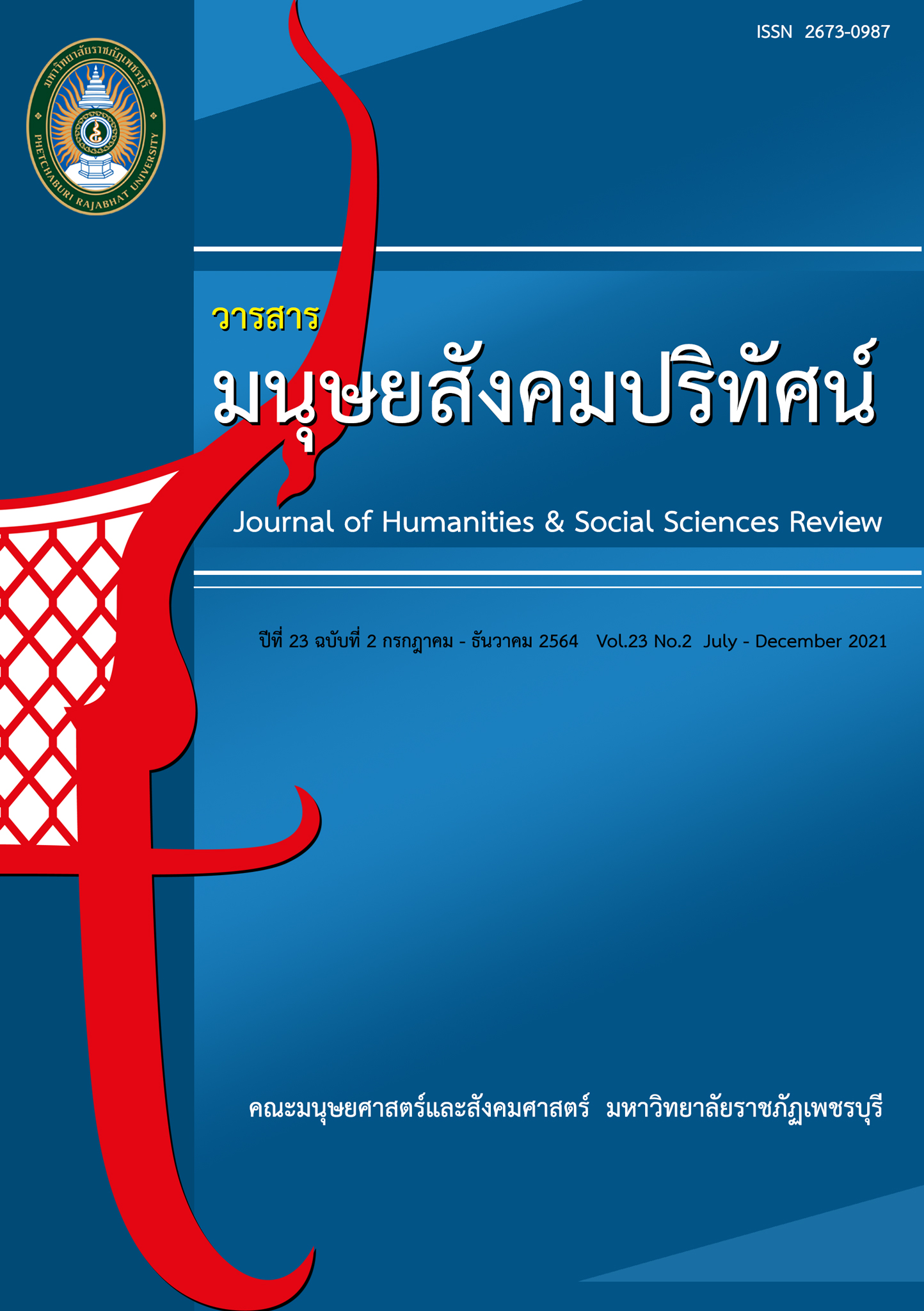Beliefs in the Morality of the West and the East
Main Article Content
Abstract
This article studied the belief in Kwan, from the problem issue that caused by doubts about the meaning of Kwan, what Kwan is, how many kinds of Kwan are there? and understanding of Kwan of the Westerner and the Easterner, the differences of understanding about Kwan of them. The study was based on information from books, ritual texts, the academic documents. The results of the study found that the belief and meaning of Kwan is a positive concept in terms of encouragement and auspiciousness in life. Every people has a desire for their life to be good. This wish is related to human destiny, which relates to each person’s fate. The person’s fate is good or bad which depends on the condition of Kwan. The belief of Kwan is humans’ belief in various races. Some races may not be called Kwan but they may be named the other names. However, after studying the belief in supernatural things, some nations, especially the Westerners, believe in Kwan in the form of encouraging, and the form of fortune, talismans, or gods. Nowadays, Westerners understand Kwan in the form of encouragement by critical thinking based on advanced science more than supernatural things. The Easterners’ belief in Kwan is based on supernatural things. It’s necessary for their life because it is an encouraging thing in the form of a ritual. At the same time, when studying the beliefs of Western and Eastern peoples found that there are 3 types of Kwan for the Westerners that are Kwan of humans, Kwan of animals, and Kwan of plants. There are 4 types of Kwan for the Eastern people, which are Kwan of humans, Kwan of animals, Kwan of plants, and Kwan of non-living things. However, the beliefs about the Kwan of the two nations are different. Western peoples do not specify the condition of Kwan but Kwan is described in the form of ritual in which humans must relate to plants and animals. This issue is the same as the ritual of the Eastern peoples.
Article Details
1. Any views and comments in the article are the authors’ views. The editorial board has not to agree with those views and it is not considered as the editorial board’s responsibility. In case, there is any lawsuit about copyright infringement, it is considered as the authors’ sole responsibility.
2. The article copyright belonging to Faculty of Humanities and Social Sciences, Phetchaburi Rajabhat University are copyrighted legally. Republication must be received direct permission from the authors and Phetchaburi Rajabhat University in written form.
References
คณาจารย์ภาควิชาจิตวิทยา. (2535). จิตวิทยาทั่วไป. เชียงใหม่: คณะมนุษยศาสตร์ มหาวิทยาลัยเชียงใหม่.
จุฑาทิพย์ อุมะวิชนี. (2542). วิวัฒนาการแห่งความคิด. กรุงเทพฯ: คณะศิลปศาสตร์ มหาวิทยาลัยธรรมศาสตร์.
เธียรชัย เอี่ยมวรเมธ. (2523). พจนานุกรมไทย-อังกฤษ. กรุงเทพฯ: รวมสาส์น.
นวลลออ สุภาผล. (2527). ทฤษฎีบุคลิกภาพ. กรุงเทพฯ: คณะมนุษยศาสตร์ ประสานมิตร.
มณี พยอมยงค์. (2529). ประเพณีสิบสองเดือนล้านนาไทย. เชียงใหม่: ส.ทรัพย์การพิมพ์.
มูลนิธิสารานุกรมไทยวัฒนธรรม ธนาคารไทยพาณิชย์. (2542). สารานุกรมวัฒนธรรมไทยภาคอีสาน. กรุงเทพฯ: ผู้แต่ง.
รุจินาถ อรรถสิษฐ. (2548). ขวัญ: ขวัญชีวิตของคนไทย. กรุงเทพฯ: กระทรวงสาธารณสุข.
ลัญจกร นิลกาญจน์. (2560). วัฒนธรรมความเชื่อกับการจัดการศรัทธาของชุมชน. วารสารนาคบุตรปริทรรศ์, 10(2), 13.
วิทย์ เที่ยงบูรณธรรม. (2536). พจนานุกรมไทยฉบับมหาวิทยาลัย. กรุงเทพฯ: สุริยบรรณ.
วิไลวรรณ ขนิษฐานันท์. (ม.ป.ป.). วิวัฒนาการพิธีทำขวัญคนไท. กรุงเทพฯ: คณะศิลปศาสตร์ มหาวิทยาลัยธรรมศาสตร์.
สมาคมพระคริสตธรรมไทย. (2542). พระคริสตธรรมคัมภีร์ ภาคพันธสัญญาเดิมและพันธ สัญญาใหม่. กรุงเทพฯ: ผู้แต่ง.
สุเมธ เมธาวิทยากุล. (2532). สังกัปพิธีกรรม. กรุงเทพฯ: โอเดียนสโตร์.
สำนักงานวิทยทรัพยากร. (2534). พจนานุกรมฉบับพระเกียรติ ปี พ.ศ. 2530. กรุงเทพฯ: วัฒนาพานิช.
อนัญญา คำเขียว. (2555). การศึกษาเพื่อการสร้างสรรค์:กรณีศึกษาประเพณีพิธีกรรมบายศรีสู่ขวัญผู้ไทย อำเภอเรณูนคร จังหวัดนครพนม เพื่อการอนุรักษ์จารีตประเพณี. วิทยานิพนธ์ศิลปกรรมศาสตรมหาบัณฑิต สาขาวิชาทัศนศิลป์:ศิลปะสมัยใหม่ มหาวิทยาลัยศรีนครินทรวิโรฒ.
อนุมานราชธน, พระยา. (ม.ป.ป.). การศึกษาศิลปะและประเพณี. ม.ป.ท.
อัธยา โกมลกาญจน. (2561). อารยธรรมคตะวันตก. กรุงเทพฯ: มหาวิทยาลัยรามคำแหง.
อุบลรัตน์ พันธุมินทร์. (2542). การศึกษาวัฒนธรรมคนล้านนาในพม่า. เชียงใหม่: มหาวิทยาลัยเชียงใหม่
Carendish, R. (1994). Man myth & magic. New York: MCavendish.
Eysenck, H.J. (1972). Encyclopedia of psychology. New York: Seabury Press.
Wolman, B.B. (1977). International encyclopedia of psychiatry psychology psychoanalysis & nearology. New York: Prochaced for Aesculapins Publishers.
Lngeheheinge, R. (1982). Tham Khwan. Singapore: Singapore University Press.
Webster’s new universal dictionary of the language. (1977). New York: Universal Press.


